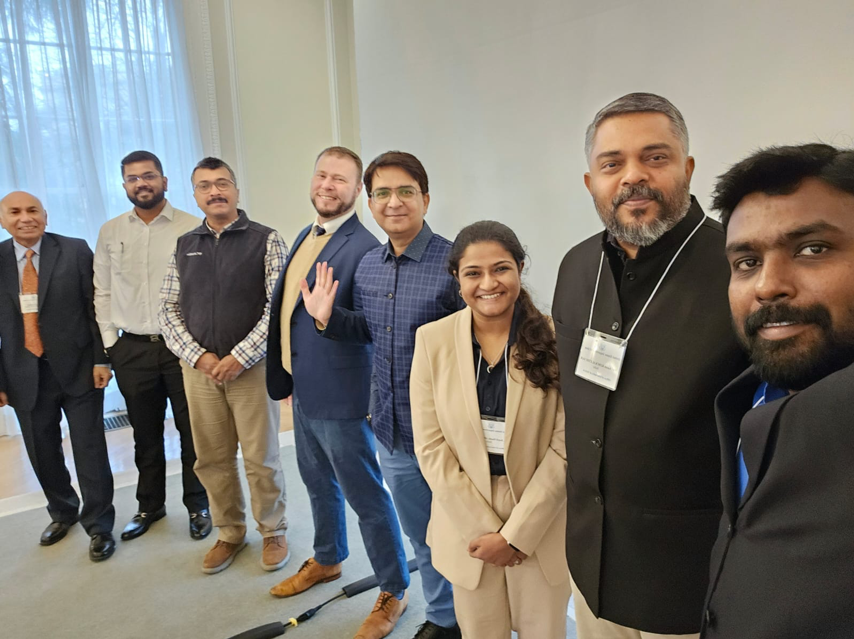On May 30th, the Center for Strategic & International Studies launched a new report titled “Confronting the Global Forced Migration Crisis.” With nearly 66 million people displaced worldwide, this global crisis poses serious challenges to economic growth and significant risks to stability and national security, as well as an enormous human toll affecting tens of millions of people.
Of particular note is the report’s insistence that developed nations, led by the US, depart from their current strategy of addressing only the “symptoms” of forced migration, and instead focus additional resources on the “root causes” of the problem.
Chapter 2 of the report provides a detailed account of what the authors believe to be the root causes of global forced migration. The greatest cause, according to the report, is armed conflict and violence, which is often rooted in ethnic and political differences. These are often deep-seated, long-running divisions, and the traditional modes of Western intervention are generally ill-equipped to address such problems (pg. 44). In addition, persecution and political oppression were identified as significant drivers of forced migration.
In addressing these root causes, the role of religion should not be overlooked. In many cases, ethnic and political armed conflict is closely linked to differences in religious conviction, leading to troubling consequences.
Monica Duffy Toft argues in her chapter in Rethinking Religion and World Affairs (2012) that conflicts are more deadly and last longer when religion is a significant factor.
Kent Hill meeting with Rohingya refugees in Cox’s Bazaar, Bangladesh during a March 2018 multi-faith delegation’s fact-finding trip. Photo: Interfaith Coalition to Stop Genocide in Burma
Quite often, religion or religious identity provides motivation or rationale to violent actions of one group against another. This can be seen in places such as Syria and Iraq, where ISIS has justified its targeting of Yazidi, Christian, and Shi’a Muslim communities based on their purported religious rulings that these communities are heretics, polytheists, or devil-worshipers. In Yemen, the regional battle for political control by Sunni and Shi’a powers continues to fuel a violent civil war that began in 2015. In Burma, anti-Muslim propaganda helped to provide cover for the military’s genocidal attacks against the Rohingya population, and likely against other religious minorities.
Religious factors also play a role in long-term persecution and political oppression. Religious believers and communities are often the targets of authoritarian regimes who seek to control groups that they believe pose a threat to their monopolization of civic and political power. Far from producing greater stability, evidence shows these types religious restrictions can increase religion-related terrorism.
Religious freedom on the other hand can help to increase stability and reduce religion-related violence that drives forced migration.
Although they do not simplify the situation, the religious dynamics of these conflicts are critical factors that should be considered. As growing evidence continues to show, religious freedom undermines violence and supports the political and social conditions that enable stability and economic growth. Any effort to address the root causes of forced migration will be served by examining the role that an advancement of religious freedom could play.
The Confronting the Global Forced Migration Crisis Report is drawn from the findings of the CSIS Task Force on the Global Forced Migration Crisis, which included RFI’s Executive Director, Kent Hill.
The full report considers numerous aspects of the international migration issue ranging from statistics illustrating the extent of the crisis, to specific challenges encountered by different sub-groups under the “forced migrant” genus, to failures and challenges in the current refugee and humanitarian systems, to reasons why this issue should be an immediate and high-priority security concern for the United States.
The full CSIS Task Force on the Global Forced Migration Crisis report can be downloaded here: Confronting the Global Forced Migration Crisis
THE RFI BLOG

Be More Faithful, Become More Resilient: An Invitation to Religious Institutions

How Soccer Reveals Different Meanings Of ‘Secular’ In France And The US

RFI’s Ismail Royer Meets with Delegation from India

Protecting the Unborn, Mothers, and Medical Ethics: The Stakes of Arkansas’ Amendment

Wisconsin Supreme Court Punishes Catholic Charities for Serving Everyone
CORNERSTONE FORUM

Public Bioethics & the Failure of Expressive Individualism

Religious Liberty in American Higher Education

Scotland’s Kate Forbes and the March of Secularism

70 Years of Religious Freedom in Sweden: Prospects and Challenges


